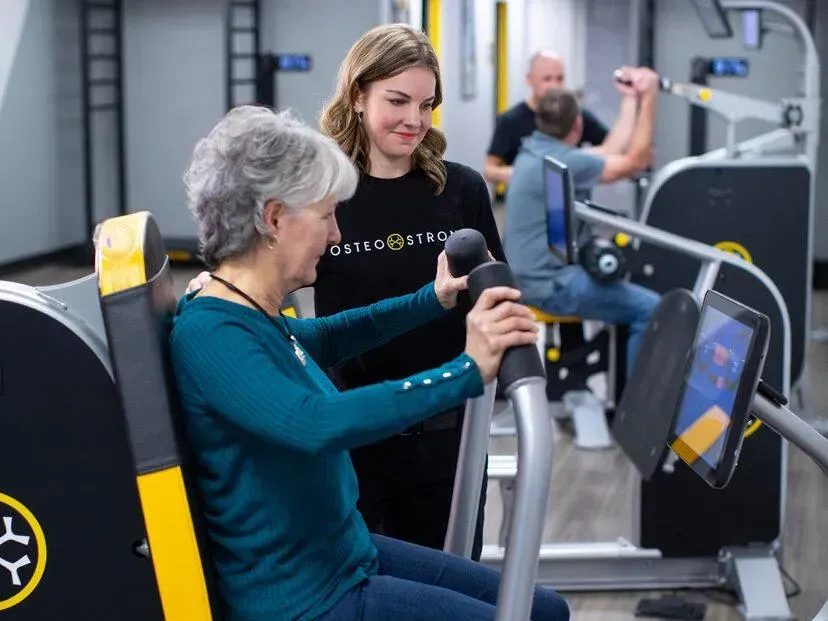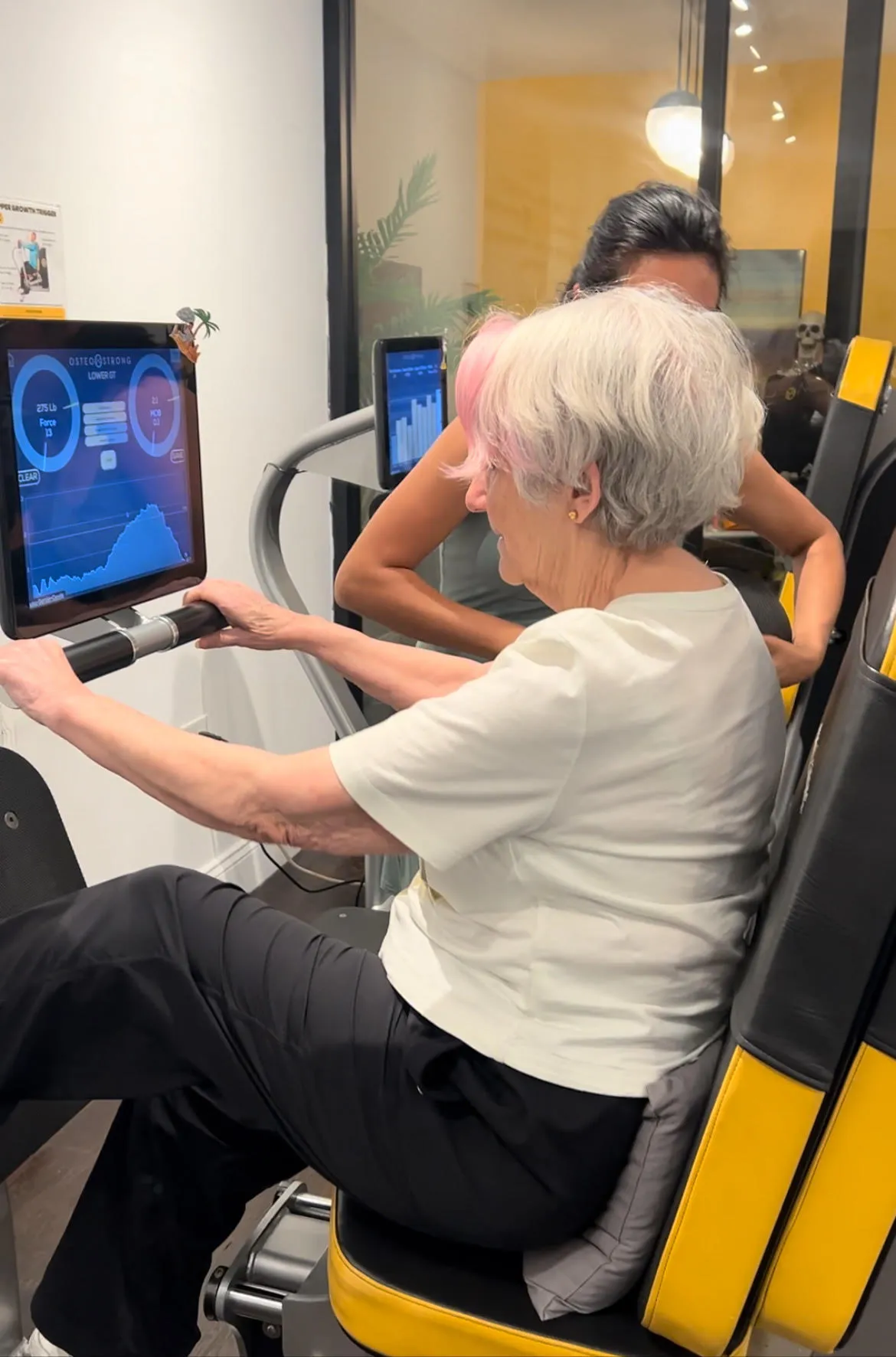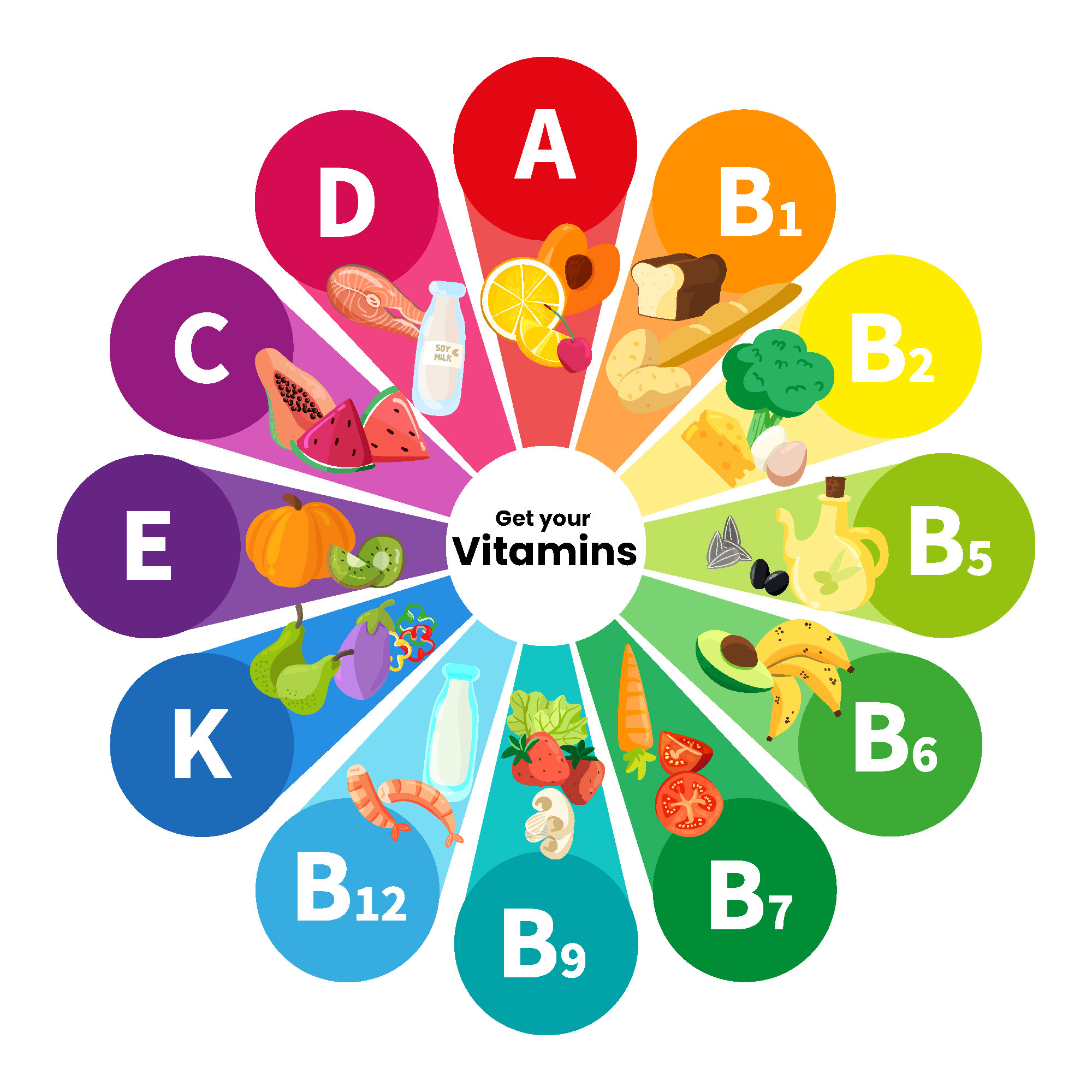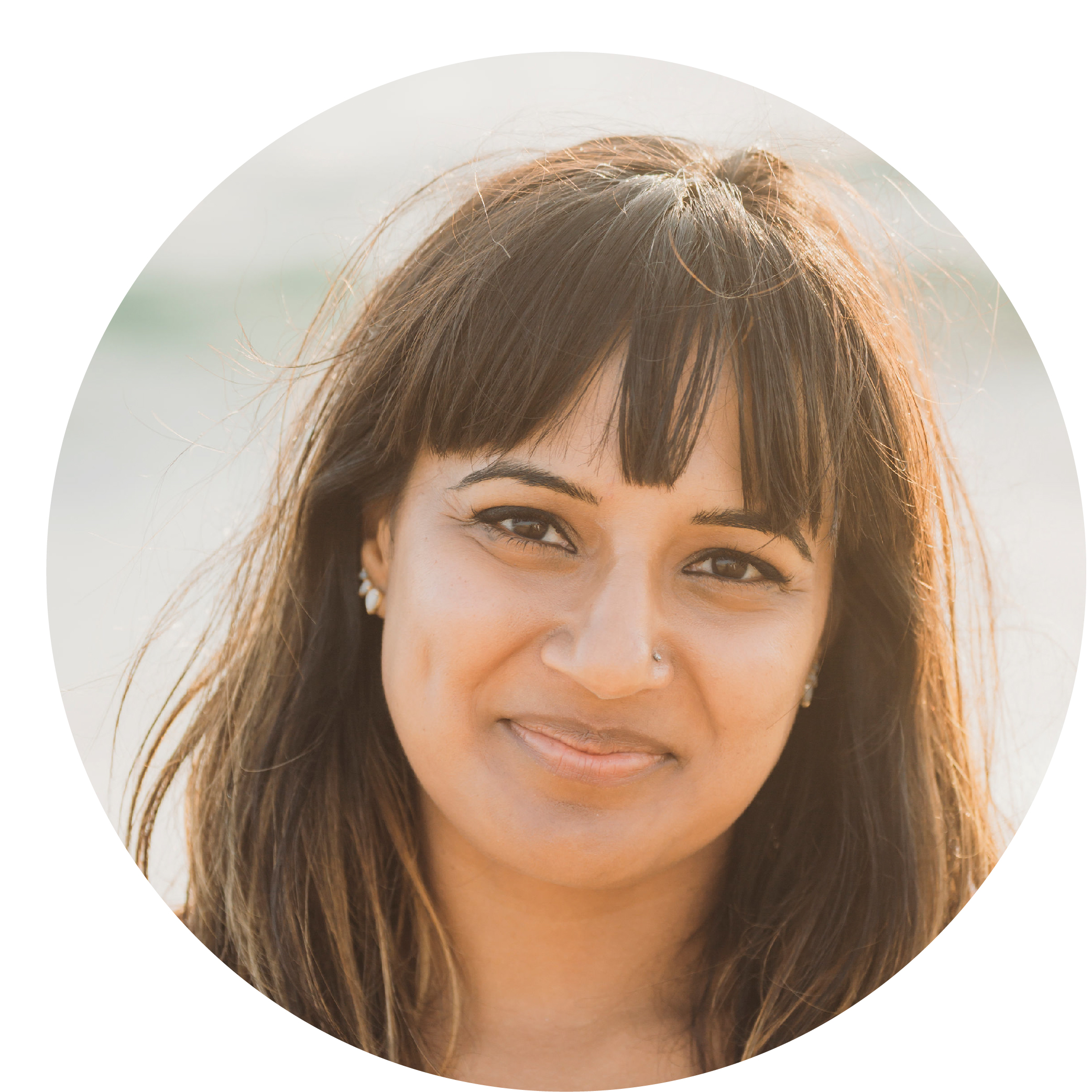
Best Ways Women Can Stay Fit and Active After 40
Fit, Active, and Healthy: How 40+ Women Can Stay in Shape
They say “40 is the new 30," and while that may be true in spirit, your body doesn't always get the memo. Women generally become less physically active after turning 40 as natural changes like slower metabolism, gradual muscle loss, and declining bone density begin to creep in. 70% of women who experience menopause after 40 say that it affected their quality of life significantly.
Many people mistakenly assume that staying fit after 40 is a losing battle or that exercise after 40 has to be toned down dramatically. In reality, with the right approach, your 40s and beyond can be among your healthiest and strongest years.
Read on to learn how to stay healthy and active after age 40. You'd also find tailored fitness routines, nutrition advice, and even cutting-edge bone health solutions available right in your neighborhood.

Table of Contents
What Really Happens to Your Body After 40
The Science-Backed Benefits of Staying Fit After 40
4 Best Fitness Routines for 40+ Women
Nutrition and Lifestyle Strategies After 40
Common Challenges of 40+ Fitness
Game-Changer: How OsteoStrong Helps Women Transform Fitness After 40
How to Create a Personalized Fitness Plan
Find the Help You Need at OsteoStrong
Frequently Asked Questions
What Really Happens to Your Body After 40
Turning 40 as a woman doesn't mean you suddenly lose your vitality, but it does mark a period when physical changes become more noticeable.
You could notice any of these four changes in your body as you age.
Metabolic Changes
Starting in your 30s, adults typically lose about 3–8% of their muscle mass per decade, and this decline accelerates after the age of 40. With less lean muscle, your basal metabolic rate (BMR) drops by 1–2% annually, making it easier to gain weight even if your diet hasn't changed. Women in particular often notice a shift toward abdominal fat storage, which increases risk for cardiovascular issues.
Hormonal Transformations
Hormones play a pivotal role in fitness over 40. Women face estrogen declines during perimenopause and menopause, which can heighten cortisol sensitivity and contribute to bone loss.
Bone Density and Joint Health
Peak bone mass is typically reached by age 30, and after age 40, bone density begins to decline gradually. Women may also lose up to 10% in the first five years after menopause. Joints also change. Cartilage thins and synovial fluid production decreases, leading to stiffness and reduced mobility.
Cardiovascular and Recovery Changes
The body's maximum heart rate lowers with age, and recovery from workouts or injuries takes longer due to increased inflammation and reduced deep sleep quality.
The Science-Backed Benefits of Staying Fit After 40
There are numerous benefits to staying fit after turning 40 as a woman. Aside from looking better physically, you get to enjoy better health and independence as you age.
Here are a few advantages of staying fit after age 40.
Physical Health Benefits
Your bones and muscles retain strength even as you age. With consistent activity, you reduce the risk of hip fractures and bone density declines. Research also links fitness to reduced risk of breast, colon, and prostate cancers. On the metabolic front, movement enhances insulin sensitivity, helping to prevent type 2 diabetes and weight gain that are typical in midlife.
Mental and Cognitive Benefits
The benefits aren't just physical. Exercise stimulates the release of BDNF (brain-derived neurotrophic factor), a protein that supports brain cell growth and resilience. This translates to sharper memory, stronger focus, and better decision-making.
Longevity and Quality of Life
Regular exercise can add healthy years to your life, enabling you to continue your daily activities with ease. And in an active community like the Upper West Side, fitness over 40 also fosters social connections, confidence, and an energized lifestyle.
4 Best Fitness Routines for 40+ Women
Exercise after 40 looks different from it did in your 20s, but different doesn't mean less effective. Fitness routines in your 40s should be practical and backed by science to achieve optimal results.
Here are 4 categories of fitness programs that are ideal for women above the age of 40.
1. Strength Training
Strength training is the most critical element for fitness over 40. Aim for 2–3 sessions per week on non-consecutive days. Focus on compound moves like squats, deadlifts, push-ups, and rows.
Use progressive overload—adding 2.5–5 lbs monthly—to maintain muscle and bone density. Functional patterns, such as lunges or carries, mimic daily activities and protect independence.
Example:
Day 1: Upper body compound lifts
Day 2: Lower body + core
Day 3: Full-body functional circuit
2. Cardiovascular Training
Blend steady-state cardio and intervals. The sweet spot is 150 minutes of Zone 2 cardio weekly, plus two high-intensity interval training sessions (15–20 minutes). You may also consider swimming, cycling, or the elliptical.
3. Flexibility and Mobility
Mobility ensures longevity in training. Start your mornings with a 10-minute mobility flow, add 5–10 minutes of stretching post-workout, and schedule yoga or Pilates 1–2 times a week, focusing on the hips, shoulders, and thoracic spine.
4. Balance and Stability Training
As fall risk increases with age, balance matters. Incorporate single-leg movements, planks, bird-dogs, and unstable surface work to challenge coordination and stability.
Note: If you're living in Manhattan's Upper West Side, Central Park is a natural playground and a perfect location for running loops or outdoor bodyweight circuits. You can also participate in outdoor events in the summer, such as yoga, rowing, and park boot camps.
Nutrition and Lifestyle Strategies After 40
Eating well becomes increasingly essential after the age of 40, as metabolism, hormones, and bone health begin to shift.
Macronutrient Priorities
Protein: Adults over 40 need more protein to combat muscle loss. Aim for 1.2–1.6g per kg of body weight daily, spread evenly with 25–30g per meal. High-quality options include lean meats, fish, eggs, dairy products, and plant-based proteins such as lentils and tofu.
Carbohydrates: Choose nutrient-dense, fiber-rich carbs to fuel energy and digestion. Time intake around workouts for performance and recovery. Good sources include vegetables, fruits, whole grains, and legumes.
Healthy Fats: Keep 25–30% of calories from fats, prioritizing omega-3s to reduce inflammation. Avocados, salmon, walnuts, and olive oil are excellent staples.
Micronutrient Spotlight
Nutrients play a critical role in health after 40:
Calcium: 1,200 mg daily for women, 1,000 mg for men
Vitamin D: 1,000–2,000 IU daily to strengthen bones
Magnesium: 400–420 mg to support muscles and the heart
B-Complex: Vital for energy metabolism and brain health

Daily inclusion of anti-inflammatory foods like berries, leafy greens, fatty fish, turmeric, and ginger helps manage oxidative stress and joint pain.
Hydration and Meal Timing
Drink 8–10 glasses of water daily, more with exercise. Stick to three balanced meals with strategic snacks. Before workouts, prioritize carbohydrates and hydration; after workouts, refuel with protein and complex carbohydrates for optimal recovery. If you do decide to eat out, opt for health-conscious restaurants that feature Mediterranean or farm-to-table menus that align with your fitness goals.
Common Challenges of 40+ Fitness
Staying fit after 40 presents unique challenges, especially in a fast-paced city like Manhattan. Many older women may face challenges in maintaining an active lifestyle as they age.
Some common challenges may include the following.
Time, career, and lifestyle constraints
Injury risks that increase with age, causing recovery to take longer
Difficulty staying motivated
Getting a personal trainer could come at a premium cost
Game-Changer: How OsteoStrong Helps Women Transform Fitness After 40
OsteoStrong provides solutions to bone health, which is one of the most overlooked aspects of fitness after 40. Healthy bones are crucial for women.
By midlife, bone density begins to decline naturally, and without intervention, this loss can accelerate. Hormonal changes, especially in post-menopausal women, and nutrient gaps only worsen the problem. To prevent severe outcomes, such as osteoporosis, fractures, and ultimately, loss of independence, experts recommend improving your bones' ability to produce healthy new cells.
OsteoStrong offers a revolutionary approach to bone health and strength. Unlike traditional gyms, its patented technology uses osteogenic loading for brief, high-intensity loading that stimulates bone-forming cells. The sessions are efficient (just 10 minutes per week), joint-friendly, and performed in a safe, controlled environment that minimizes injury risk.
While not a replacement for cardio, flexibility, or lifestyle exercises, OsteoStrong is a foundation enhancer. Stronger bones support every other activity, from strength training after 40 to weekend Central Park runs. Since it's also time-efficient, it means a freer schedule for other health activities.
How to Create a Personalized Fitness Plan
Start with medical clearance, including a physical exam, blood work, and, ideally, a bone density scan.
Next, test your current strength, cardiovascular fitness, and flexibility. From there, establish SMART goals—specific, measurable, attainable, relevant, and time-bound—that align with your lifestyle.
Implementation Strategy
Phase 1 (Weeks 1–4): Build habits and master form.
Phase 2 (Weeks 5–12): Introduce progressive overload and refine your routine.
Phase 3 (3+ months): Advance training, optimize recovery, and adapt as needed.
Find the Help You Need at OsteoStrong
You do not have to figure it all out on your own. OsteoStrong's expert-led team is trained to help ageing women develop better bone health and stay more active than ever. Our advanced therapy programs also help improve your overall well-being.
Book your free consultation today.
Frequently Asked Questions
Is it too late to start exercising if I've been sedentary for years?
No. It's never too late to get in shape and reap the health benefits of physical fitness. Starting a new fitness routine over 40 holds a vast range of benefits and helps allow people to live longer, fuller lives. Research shows that starting exercise in your 40s, 50s, or beyond can provide similar benefits to lifelong exercisers.
How much exercise do I really need after 40?
Minimum recommendations include 150 minutes of moderate cardio weekly, 2-3 strength training sessions, and daily flexibility work. However, with OsteoStrong, it is even shorter, requiring just 10 minutes per week.
How do I know if OsteoStrong is right for me?
OsteoStrong is a suitable option if you have concerns about bone density, prefer time-efficient workouts, have joint limitations that prevent traditional weight training, or want to complement your existing routine with focused work on bone health.
How long before I see results?
Initial improvements in energy and mood occur within 2-3 weeks. Strength gains become noticeable at 4-6 weeks, body composition changes occur at 8-12 weeks, and significant improvements in bone density require 6-12 months.
At OsteoStrong UW, our team will conduct bone density tests to evaluate your bone quality and provide targeted programs and nutritional guidance to help improve your bone health. As always, consult your doctor to determine the best practices for your individual needs.
📞 Contact us at +1 914-690-7190
🌐 Visit us at https://osteonewyork.com/
📧 Email us at [email protected]


